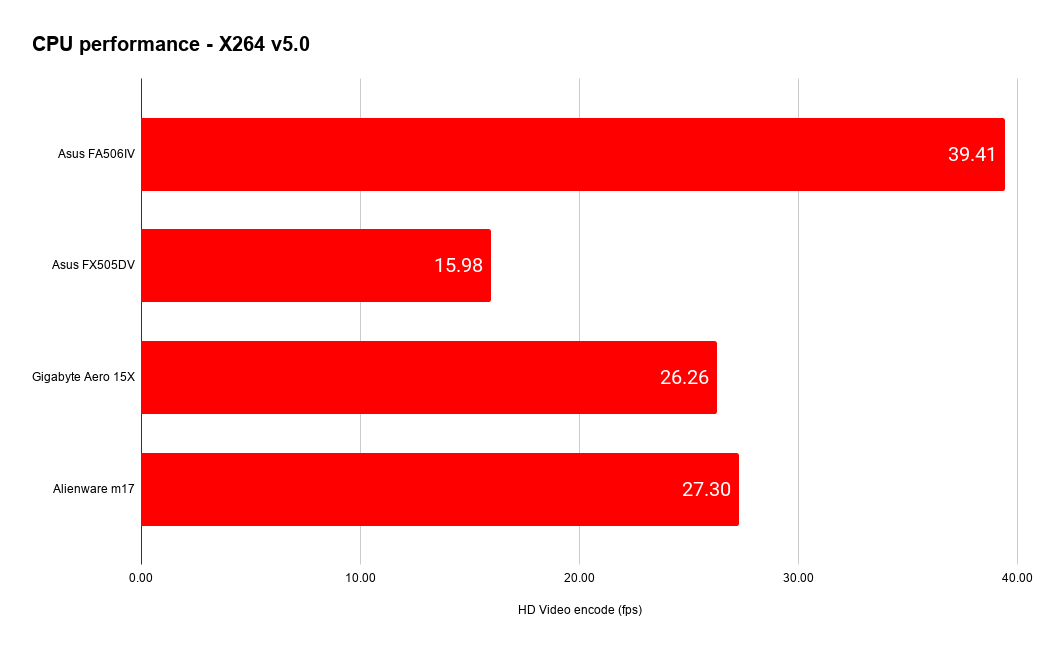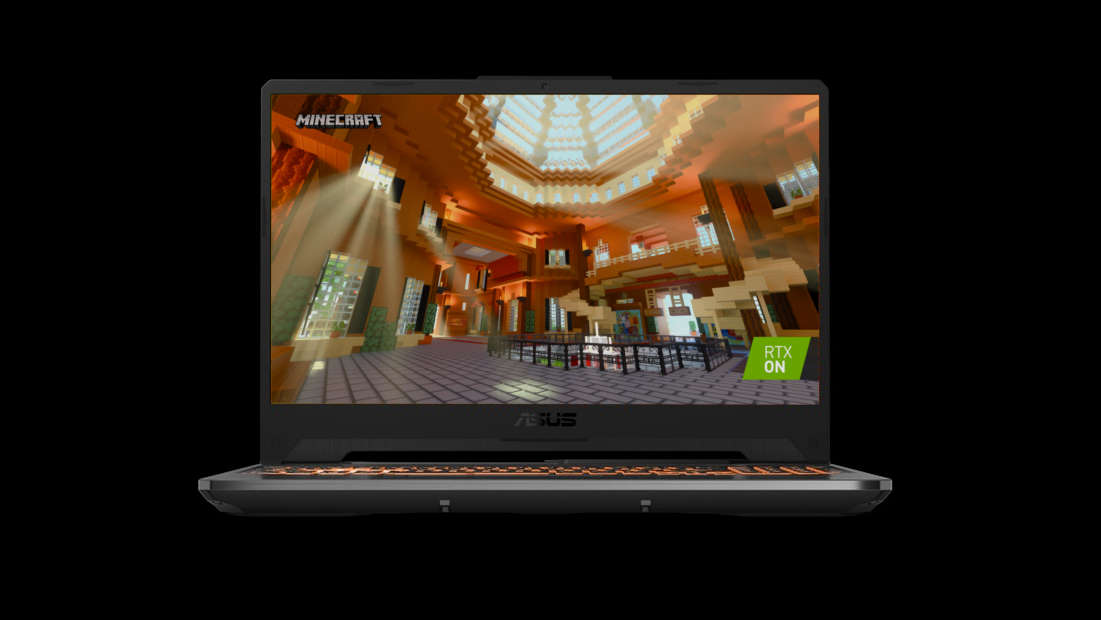Our Verdict
An incredibly versatile, affordable gaming laptop, with a battery life that is almost unprecedented at this price point or performance level.
For
- Impressive new 8-core AMD APU
- 90Wh battery
- Decent 144Hz FHD screen
- Robust design
Against
- There will be $999 RTX 2060 machines...
PC Gamer's got your back
The new Asus TUF A15 is one of the most versatile gaming laptops you can buy right now. That's all down to its affordable combination of brand new, top-end AMD Ryzen APU mixed with a healthy dollop of Nvidia's Turing graphics silicon. This isn't some thin-and-light notebook, nor a hulking great workstation machine, but as well as some genuinely impressive gaming chops the Asus F506IV—or TUF Gaming A15 to its close friends—is capable of so much more.
Model - FA506IV
Processor - AMD Ryzen 7 4800H
GPU - Nvidia RTX 2060
Memory - 16GB DDR4
Memory Speed - 3,200MHz
Screen size - 15-inch
Resolution - 1920 x 1080
Refresh rate - 144Hz
Storage - 1TB Intel SSD 660p
The eight cores of Ryzen Zen 2 processing is able to offer the sort of CPU performance video editors and 3D artists will love, with a capacious high-speed SSD also playing its part. The 90Wh battery and 7nm APU will ensure that it keeps up and running away from a power point for an almost unprecedented decent length of time for a gaming laptop too.
Sure, at 5lbs (2.3kg) this isn't some Ultrabook machine you'll want to slip into a courier bag and set up in a coffee shop to write your memoirs/frag your friends, but neither is it some vast desktop replacement either.
And at $1,300 (£1,300) it's all available for a very reasonable price. In a previous life I checked out the last generation version of this notebook, the Asus TUF FX505DV. It was a very smartly specced machine, which mixed quality components with intelligent compromises to ensure an entirely capable gaming experience from a mid-price gaming laptop.
At this sort of price you're not talking about a cheap device by any stretch, but it's not like a Gigabyte Aero 15X or Alienware m17 that costs upwards of $3,000. Even Asus' Zephyrus or Strix Scar laptops will cost far in excess of the more affordable TUF range of gaming machines, but the way the way the lineup is specced out makes them fantastic value, and the little niggles I had with the original design have more or less evaporated with this update.
Obviously the headline-grabbing, beating heart of the TUF Gaming A15 is the new AMD Ryzen Mobile APU. The Ryzen 7 4800H isn't quite the top of the stack, the Ryzen 9 4900HS inside the Asus Zephyrus G14 takes that particular accolade, though there really isn't too much between them. The 4900HS is nominally faster, but can also squeeze into a smaller build thanks to its 35W TDP. The 45W 4800H, however, is only 100MHz slower in terms of its peak clock speed, but thanks to the vagaries of cooling and dynamic frequencies there's practically nothing in it when it comes to CPU benchmarks.









The eight cores and 16 threads of the latest Ryzen APU make it one of the most powerful slices of multi-core silicon you will find in a non-workstation laptop, and the Zen 2 architecture means that it's got the same sort of single-core performance as the top Intel mobile gaming processors.
That has, however, made surprisingly little difference to the gaming performance of this latest Asus machine compared with the last-gen version I tested rocking the much less powerful quad-core Ryzen 7 3750H. What can I tell you, processing power makes very little difference when you've got a powerful graphics card paired up with it. The Far Cry New Dawn result does look a little odd, but that could be largely down to newer drivers compared with the original benchmark results for the other laptops.

These are the best gaming laptops currently available... the AMD Ryzen-powered machines will surely appear once they're fully available.
While the Nvidia RTX 2060 may be the bottom rung of the ray tracing ladder, it's a great 1080p graphics card, which I think is still the sweet spot for gaming laptops. With 1,920 CUDA cores, 6GB GDDR6, and a smattering of ray tracing and tensor cores, you get an impressive amount of gaming performance in this little machine. As well as access to RTX-enabled games, such as the awesome new Minecraft with RTX update, and the ability to make them run smoothly thanks to Nvidia's new DLSS 2.0 feature.
The AI revolution may end up taking over the world and deciding that humanity is either superfluous to its existence, or a ripe power-source, but until then it's helping make our games both look pretty and run well. So, on balance it's probably going to be worth the tradeoff.

Backing all that up is a full 1TB of solid state storage in the shape of Intel's SSD 660p. It's an NVMe drive and so promises far greater speed than either a spinning platter or SATA-based SSD. But it's using QLC (quad-level cell) memory, which is pretty low down the performance pecking order. QLC allows Intel to boost the storage density, and means you can get affordable, high-capacity SSDs like this, but the tradeoff is that speeds degrade quickly as the drive fills up. It also has a lower endurance rating than either TLC or standard MLC SSDs, but that still means you'd have to completely fill the drive up with new data many, many times a week to get near the limits.
So in general use, I think you're going to be fine.
You don't have to spend a fortune on a gaming laptop to get serious performance
The unsung hero of many gaming laptops is the battery. Mostly because they're not heroes at all and are generally pretty weak-sauce. Not so with the TUF Gaming A15, where we've got a full 90Wh battery that delivers an unprecedented level of uptime for a 15-inch gaming laptop. We're used to thin-and-lights offering lengthy battery life figures, but you're often lucky if you can get over an hour out of a gaming laptop.
The Asus TUF A15, however, will deliver almost two hours of gaming. Solid gaming, full-time 3D rendering, and not some workday web-surfing. If you're doing more lightweight work on this machine then you'll get at least three times that, probably more.
Which, like I said, makes this one of the most versatile gaming laptops you can buy. You've got the gaming performance, the CPU chops, and the ability to do all that away from a power source for an impressive amount of time. But where are those compromises?

Obviously that QLC SSD isn't top-drawer, but it's still an NVMe drive and faster than most budget offerings, and the chassis feels a little cheaper than the sort of brushed aluminium, unibody designs you could get by spending another couple of grand. But where the last-gen version of the TUF Gaming laptops had a very visible flex in the chassis, notably under the keyboard, there's none of that with the Asus TUF A15.
It's plastic, but never feels flimsy. It's solid, robust and feels like it could take a fall. In fact I'm reliably informed that Asus' engineers spend a fair amount of their testing time dropping machines from a height to see how they react. Judging from the feel of the A15 I reckon it would fare pretty well. Though I draw the line at going so far in my own testing… at least not on purpose.
The Asus TUF A15 is also relatively subtle. The redesigned lid only has the winged TUF logo in slightly darker gray on the front and it feels rather more restrained than previous designs. Under the lid is a different matter where the full RGB chiclet keyboard lights up like the Bellagio fountains.
There is, however, one fly in the Asus ointment, and that's the spectre of $999 RTX 2060-powered gaming laptops looming large on the horizon. The pairing of Nvidia's best-priced RTX card and some more affordable Intel CPUs is bringing the cost down on mid-priced gaming laptops. And if you don't need the eight cores of Zen 2 power for anything more creative than gaming, you arguably don't need something as processor-heavy as the TUF Gaming A15.
But, as you can probably tell by now, I'm still a fan. The Asus TUF Gaming A15 shows you don't have to spend a fortune on a gaming laptop to get serious performance across a multitude of disciplines. Of course we're biased on the gaming side, but this thing has a whole lot else to offer too. And all for a genuinely decent price too.
An incredibly versatile, affordable gaming laptop, with a battery life that is almost unprecedented at this price point or performance level.

Dave has been gaming since the days of Zaxxon and Lady Bug on the Colecovision, and code books for the Commodore Vic 20 (Death Race 2000!). He built his first gaming PC at the tender age of 16, and finally finished bug-fixing the Cyrix-based system around a year later. When he dropped it out of the window. He first started writing for Official PlayStation Magazine and Xbox World many decades ago, then moved onto PC Format full-time, then PC Gamer, TechRadar, and T3 among others. Now he's back, writing about the nightmarish graphics card market, CPUs with more cores than sense, gaming laptops hotter than the sun, and SSDs more capacious than a Cybertruck.


